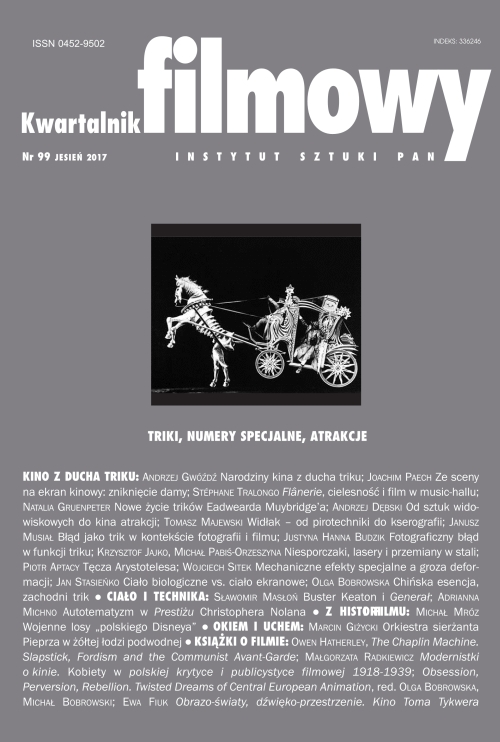Tęcza Arystotelesa. Droga animacji komputerowej do pierwszych efektów cyfrowych w filmie
Aristotle’s Raibow. The Path of Computer Animation to First Digital Special Effects in Film
Author(s): Piotr AptacySubject(s): Film / Cinema / Cinematography
Published by: Instytut Sztuki Polskiej Akademii Nauk
Keywords: Special effects;computer animation;
Summary/Abstract: The appearance of the first computer-generated special effects in the 1970s has forever changed the face of world cinema. This breakthrough had been made possible by the work of the engineers, programmers and experimental filmmakers, who for the preceding two decades developed graphic algorithms and explored the artistic potential of new digital visuals. This period was characterized by a unique atmosphere of creativity gained through the cooperation of so many different artistic and scientific circles. The process of shaping this relationship can be traced back to the achievements of the Whitney brothers, Ch. Csuri, P. Foldes and staff of research centres (such as K. Knowlton, H. Gouraud, E. Catmull et al.). It appears that early digital animations, which fascinated viewers, such as for example Michael Crichton’s Westworld (1971), George Lucas’s Star Wars (1977), and Gary Nelson’s Black Hole (1979), are the descendants of the innovations made by the film makers, who since the 1950s, explored the domain of computer animation.
Journal: Kwartalnik Filmowy
- Issue Year: 2017
- Issue No: 99
- Page Range: 119-130
- Page Count: 12
- Language: Polish

